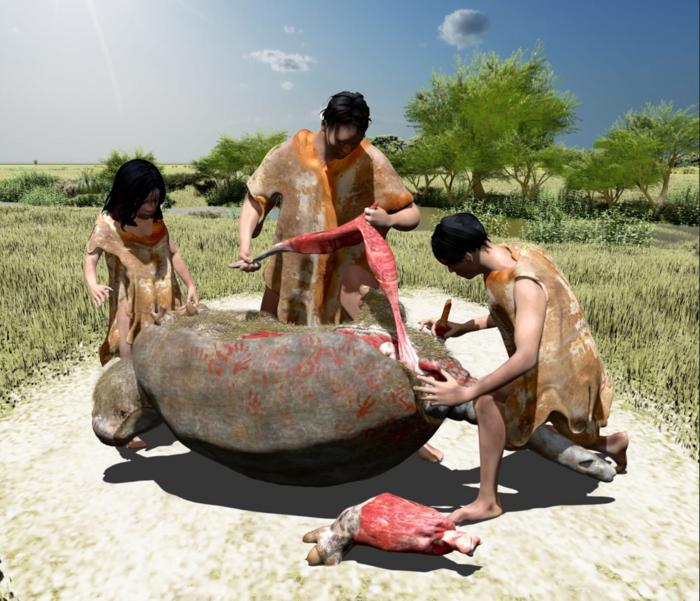Humans likely butchered 6-foot-long armadillo-like animals over 20,000 years ago, according to a report in PLOS ONE. These findings not only represent an interesting dietary choice (and make one wonder just what ancient armadillo must have tasted like), but they also bump back the time of known human occupation of South America by about 6,000 years.
Pleistocene Butchers
Scientists analyzed cut marks on parts of the pelvis, tail, and body armor of a creature called glyptodont, also referred to as Neosclerocalyptus. They concluded that those marks on the fossil found in southern South America were made with stone tools. The pattern of the marks also indicated that the butchers were targeting dense flesh.
“We found that the cut marks were not randomly distributed but focused on those skeletal elements that harbored large muscle packs like the pelvis and the tail,” says the paper’s co-author Miguel Delgad, an archeologist at Universidad Nacional de La Plata, Argentina.
Although the scientists had no way of reconstructing the order in which the cuts were made, they noticed that the marks were concentrated near where the largest tendons — in other words, the juiciest hunks of meat — were located.
“This is a typical pattern observed during a butchering process,” says Delgad.
Read More: Which Animals Did Early Humans Mainly Hunt?
The Arrival of Humans in South America
The timing of when those marks were made is also significant. Radiocarbon dating indicates these fossils are around 21,000 years old, nearly 6,000 years older than other known archaeological evidence of human activity in southern South America. The fossil was found near the Reconquista River, northeast of the Pampean region in Argentina.
Anthropologists have long hotly debated when humans starting living in South America, says Delgad. Until recently, the traditional model held that humans arrived there 16,000 years ago. This study provides evidence that humans entered the continent either during or before the Last Glacial Maximum (25,000 years to 18,000 years ago), a period characterized by cold and dry environments.
“This implies that humans adapted successfully to the harsh environments characterizing such a period,” says Delgad. The authors suggest that more excavations at the site might produce more evidence supporting that claim.
Read More: The Migration of Ancient Indigenous People in South America is a Complex Tale
The Pleistocene Epoch Mammal Extinction
The timing of humans arriving on that continent could be relevant to the extinction of many large mammals at the end of the Pleistocene Epoch. Although that period of extinction is complex and not well understood, this new study might add some clarity to the factors that contributed to it.
“It seems that humans, climatic changes, and landscape modifications contributed differentially to their extinction, but the importance of our finding is that humans were consuming megafauna much earlier than we thought, which likely indicates that the human factor may have been relevant in the extinction process,” says Delgad.
Read More: How Humans Survived the Ice Age
Article Sources
Our writers at Discovermagazine.com use peer-reviewed studies and high-quality sources for our articles, and our editors review for scientific accuracy and editorial standards. Review the sources used below for this article:
Before joining Discover Magazine, Paul Smaglik spent over 20 years as a science journalist, specializing in U.S. life science policy and global scientific career issues. He began his career in newspapers, but switched to scientific magazines. His work has appeared in publications including Science News, Science, Nature, and Scientific American.













/https://tf-cmsv2-smithsonianmag-media.s3.amazonaws.com/filer_public/34/31/3431771d-41e2-4f97-aed2-c5f1df5295da/gettyimages-1441066266_web.jpg)






Discussion about this post